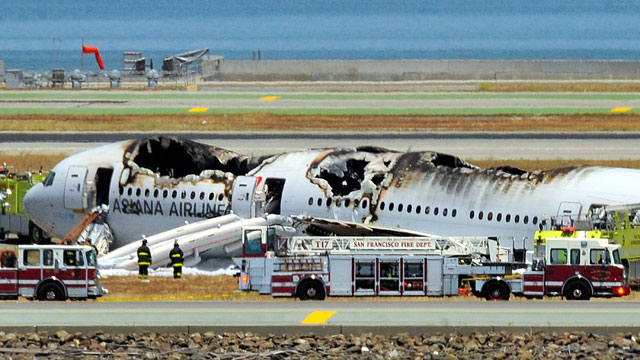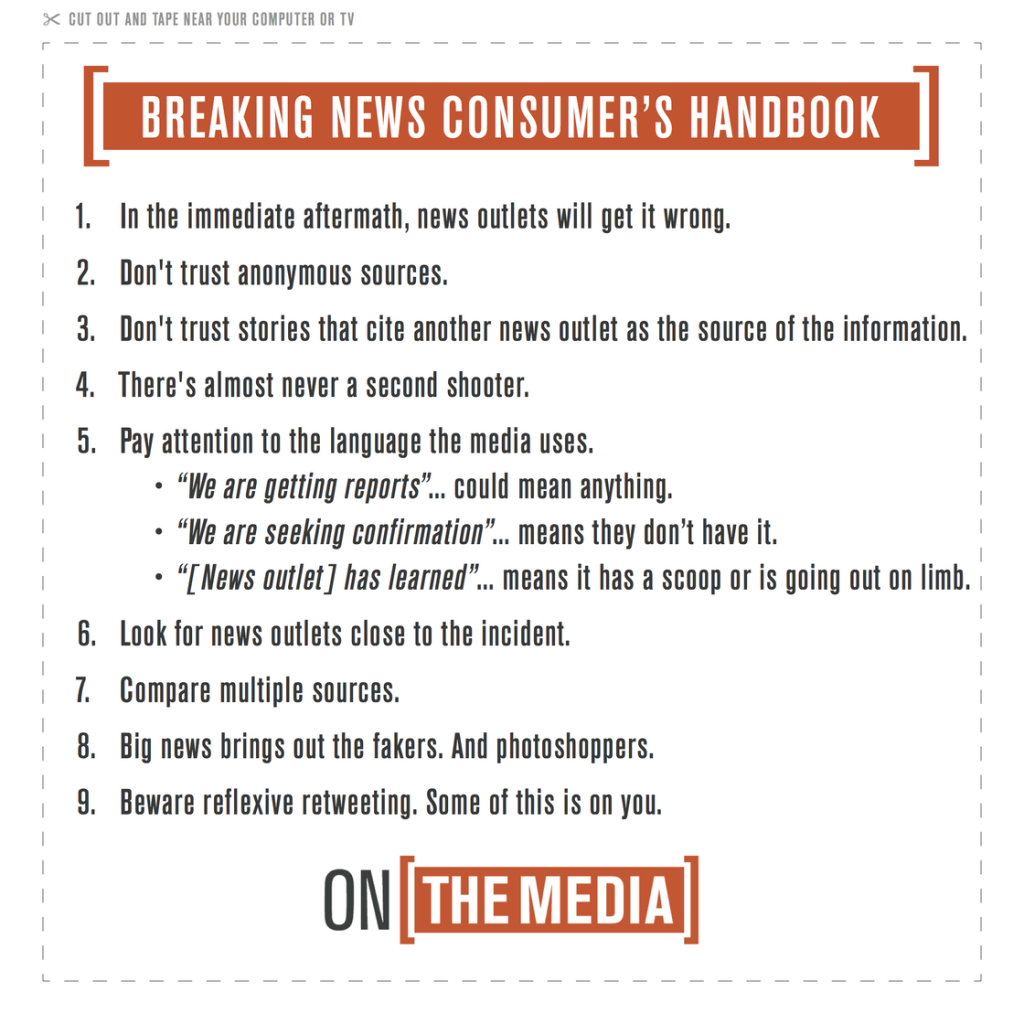
When a big news story happens, who and what should you believe about the unfolding events? It's a question for everyone, whether you're a news "consumer" or someone who's responsible for reporting a breaking story, editing it, and making sense of it for your audience. If you're a journalist, you have other questions, too: How do I know what I think I know about this story? How do I make sure I get this right? All those questions seem to come up again every time a news organization stumbles in the midst of a major story. (This week's example: In the chaotic aftermath of the Washington, D.C., Navy Yard massacre, CBS and NBC misreported the name of the shooter.)
So here (by way of Eydar Peralta of NPR's The Two-Way news blog) is something we all can use: a "Breaking News Consumers Handbook" from WNYC's "On the Media" (here's the handy, downloadable PDF version).
KQED Public Radio broadcasts this week's "On the Media," including a segment on the breaking news handbook, Sunday at 2 p.m. and midnight.
